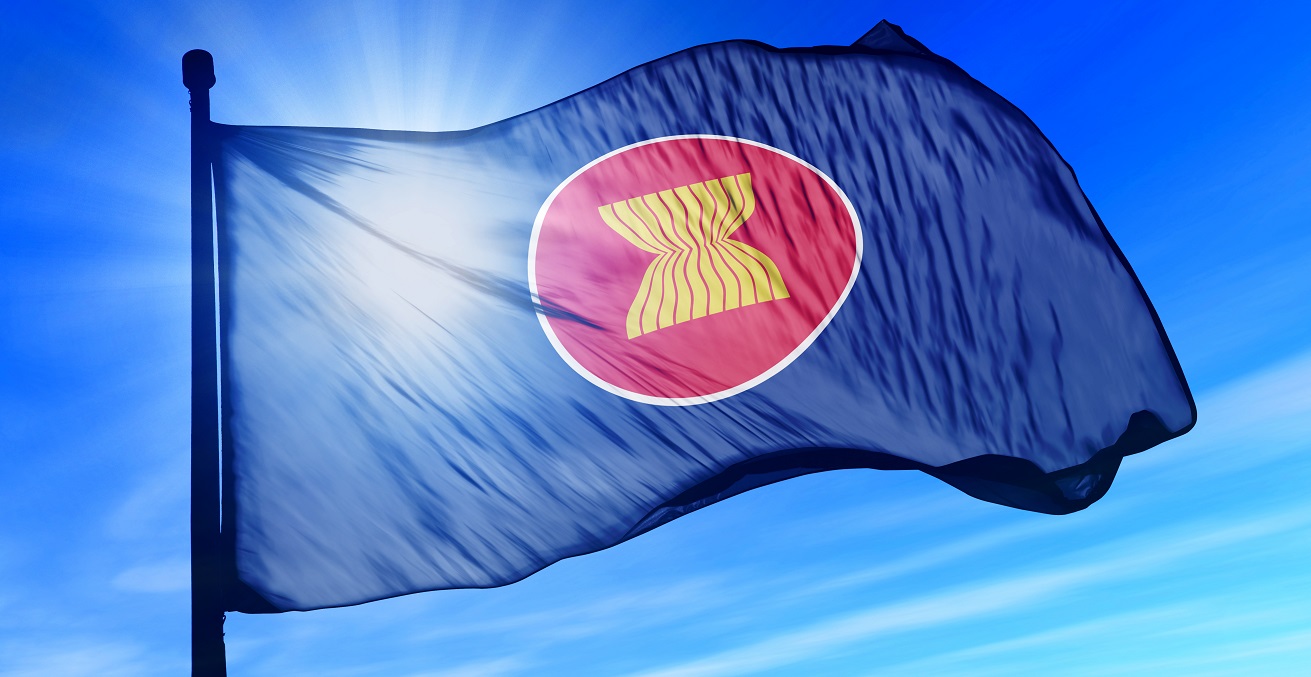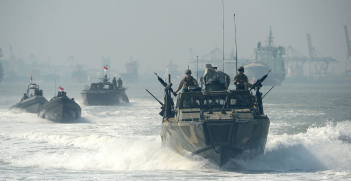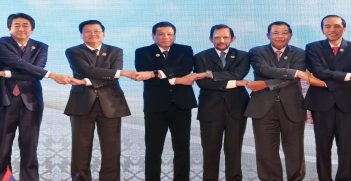Consistency Is Not Always A Virtue

Southeast Asian diplomacy is instinctively promiscuous, not monogamous. The natural multipolarity of the region facilitates this instinct because it maximises room for manoeuvre and the exercise of agency.
This is part three of a three-part series on the ongoing relevance of ASEAN in regional cooperation as strategic tension rises between the US and China. Part I, published on September 18, can be found here. Part II, published September 24, can be found here.
Southeast Asia’s multipolarity is not symmetrical – the US and China are in a league of their own. But even asymmetrical multipolarity maximizes manoeuvre space for ASEAN members. The ASEAN-led forums are coherent enough to be supplementary means for the major powers to promote their interests in Southeast Asia – and thereby anchor them to the region and to ASEAN — but not so strong as to be able to stymie anything vital to them. That is precisely why they find ASEAN useful. This is the real meaning of “ASEAN centrality.”
It was the pressure of events, and not the persuasive powers of the Singapore and other diplomats that had reservations about the Zone of Peace, Freedom, and Neutrality (ZOPFAN), that caused Malaysia and Indonesia to reorder their priorities and quietly drop ZOPFAN in favour of balance. A similar dynamic may be beginning on the mainland where the dams that China has built and is still building on the upper reaches of the Mekong pose potentially existential challenges to down-river riparian countries, particularly less-developed countries like Laos and Cambodia.
Cambodian Prime Minister Hun Sen has called China Cambodia’s “most trustworthy friend.” Not every Cambodian would agree, and certainly not when it comes to an existential issue. The leaders of Cambodia and Laos may not care very much about what happens in the South China Sea. But they must care about what happens to a river on which the livelihood, and indeed survival, of a large part of their populations depend. If they are indifferent, their people will eventually force them to care – Cambodia has already suspended two dam projects due to domestic opposition. The utility of making the regional interest some part of their national interest will eventually sink home.
Having lived in the midst of great power competition for centuries, the strategic instinct of Southeast Asia is not to align with any major power across all domains. The Southeast Asian diplomatic instinct is to hedge, balance, and bandwagon simultaneously, not allowing a tactic adopted on one issue, say bandwagoning, to dictate the approach to another issue or in a different domain, where it may be possible to hedge or balance.
Changing US-China Relations
I once asked a senior Vietnamese official what a change of leadership in Hanoi meant for relations with China. Every Vietnamese leader, he replied, must get along with China and must stand up to China, and if you cannot do both at the same time, you don’t deserve to be leader. In different degrees and in different ways, every ASEAN member has much the same attitude towards China and the US.
US-China competition is not a “new Cold War.” This is an intellectually lazy trope which downplays the complexity of a relationship in which deep mistrust coexists with interdependence of a type and depth never before seen in strategic rivals and that certainly did not exist between the US and the Soviet Union. The US and China are entangled in supply-chains of an intricacy and scope that never before existed in the world economy.
This makes it improbable that they will be able to “decouple” across all domains, although selective decoupling in certain fields has already begun. Coping with this will not be easy. But the very complexity and ambivalence of US-China relations, and indeed all post-Cold War major power relationships, provides ample scope for the exercise of the Southeast Asian instinct not to structure strategic alignments consistently across the entire gamut of issues or on the basis of only one dimension of a relationship with any major power. This is what is meant when Southeast Asian countries say they do not want to take sides. Southeast Asian countries will sometimes tilt one way on one issue or in one domain, and sometimes tilt the other way on some other issue or in another domain or go our own way as our own interests dictate. Few choices are binary.
There is an assumption prevalent in many Western countries, particularly the US, that Southeast Asian countries are all so irredeemably corrupt or so terminally naïve as to cynically sell their national interests to China or cheerfully and carelessly ignore interests when dealing with China. Of course Southeast Asian countries do not shun Chinese trade and investment. Why should they? But I would like to assure you that while we may look stupid, not all of us are.
China is already facing pushback, even from countries highly dependent on its trade and investment and who participate in China’s signature Belt & Road projects. Southeast Asian attitudes towards China are complex and fraught with ambivalence. So too are Southeast Asian attitudes towards the US complex and ambivalent. The US and China are both acknowledged as important; neither – for different reasons — is particularly trusted.
As a contiguous big country, China is always going to enjoy significant influence in Southeast Asia. But for precisely the same reasons, China is also always going to evoke anxieties, which Beijing has done little to assuage and under Xi Jinping, have been enhanced. Countries on China’s periphery will therefore not allow themselves to be hemmed into an exclusive relationship no matter how dependent they are on China.
Of course, whether Southeast Asian countries have the wit to recognise the opportunities for manoeuvre and the agility and courage to use their agency are different matters. ASEAN’s trajectory has not been, and will never be, continual progress along a straight line. It will always move forward with pauses and by meanderings. But of late, there are signs that ASEAN’s strategic horizons are narrowing; signs that some members prefer to rest on past laurels rather than break new ground, and even of what the unkind may call timidity creeping into ASEAN decision-making.
This is not because a new generation of officials and political leaders dealing with ASEAN have inferior intellects or queasier stomachs than their predecessors. The causes are structural and have to do with the evolution of domestic politics in key ASEAN states. From the 1960s to the 1980s, and even up to the early 1990s, all the ASEAN members were authoritarian states of some degree. This was when ASEAN was able to take many seminal decisions, not the least of which was to form ASEAN in the first place.
The hard, if politically incorrect, fact is that authoritarian systems are better at certain things: pursuing long-term goals and taking tough decisions without giving public opinion too much consideration. It is now more difficult for the pluralistic political systems that have evolved in several ASEAN members since the late 1990s to establish and sustain domestic consensus. Too often, leaders follow rather than shape public opinion. Without national consensus, it is impossible to reach meaningful ASEAN consensus on many issues.
Some of the recommendations in the US Institute for Peace’s (USIP) special report on ASEAN’s future seem oblivious of this reality and could make an already complicated situation even more complicated than absolutely necessary. I am not arguing for ASEAN members to return to authoritarianism. That is clearly impossible and undesirable on other grounds. It is only a gentle reminder to those with a penchant for looking at political developments in Southeast Asia in simplistic terms as the advance or retreat of “democracy,” to be careful about what you wish for and that few things are either wholly good or wholly bad.
Indonesia is key
The reason why ASEAN survived while other attempts at regional organisation failed essentially amounts to the difference between Indonesian Presidents Suharto and Sukarno. Suharto was no less a nationalist than his predecessor but chose to assert Indonesian nationalism in a fundamentally different way. Post-Suharto Indonesia has yet to establish a stable new internal equilibrium. Indonesia is not just a geographic place, it is also and more fundamentally an idea. Since 1945, the idea of Indonesia has been contested: Will it be a secular-nationalist idea or an Islamist-nationalist idea? Indonesia’s first two presidents supressed the contest by force in favour of the former. After Suharto’s fall, that contest is again the main axis of Indonesian politics. Where Indonesia goes, ASEAN must ultimately follow.
No major power can capture and hold ASEAN without capturing and holding Indonesia. Domestic politics will influence the details of Indonesia’s future strategic choices. But since nationalism of one variant or another is the common factor in the contest over the idea of Indonesia, domestic politics is unlikely to change its broad strategic trajectory. Since the 1950s, Indonesia has accepted significant amounts of aid, trade, and investment from the US and the West, the Soviet Union, and Maoist China, but has ultimately gone its own way, eluding all attempts at capture and frustrating every major power that has tried. Xi Jinping’s China is learning the same lesson. To put things bluntly, China is learning that not everyone can be bought, that the bought do not always stay bought, and that even the corrupt can be nationalists.
Since the 19th century, nationalism has proven to be the most potent and enduring global force. It overcame empire, overcame communism, and virulent ethno-nationalisms of various kinds are now pressing hard against the civic-nationalisms of many Western democracies. Nationalism will not be denied. Contemporary China is better understood as “Han Ethno-nationalism with Socialist Characteristics” rather than “Socialism with Chinese Characteristics.”
Not the EU
ASEAN is often compared, consciously or unconsciously, with the EU. Until recently, when the EU’s feet of clay were exposed, the comparison was not to ASEAN’s advantage. The comparison is false, although the essential issue both organisations were intended to address is similar.
After Bismarck united Germany in 1871, a fundamental imbalance arose in the heart of Europe. It took two world wars and a holocaust before Europe settled upon regionalism as a solution, which worked quite well for a time. After Germany was reunited in 1990 and imbalance re-emerged in a new form, deeper and more ambitious regionalism through the EU – “Union” and “Community” through the pooling of sovereignties– seemed the solution. But this was a step far too far.
The EU is based on a fundamental internal contradiction: a supposedly post-nationalist “Community” based on fears of a superior, German nationalism. It is a construct that denies a basic human instinct: the need for identity, of which national identity is a core and enduring component. Many of the problems with which the EU is now struggling stem from these internal contradictions. I do not think these contradictions can be resolved. No political solution that defies human nature can work, any more than an engineering solution that defies the laws of physics can ever work. Until Europe recognises reality and aligns its ambitions with human nature, it will lurch from crisis to crisis, never quite realising its potential.
ASEAN has done better. Indonesia’s size posed as potentially a destabilising imbalance in the heart of Southeast Asia as Germany did in Europe. It only took a minor undeclared war and a few failed experiments to find a solution that has stabilised Southeast Asia.
The solution was not based on a futile attempt to deny human nature. It did not require the suppression of nationalism; it did not require Indonesian or any other nationalism to subordinate itself to another nationalism or to some supra-national ideal. Within ASEAN, we may talk about “community” but we don’t really mean it, or we don’t mean what the Europeans mean when they use the word. The “C” in “community” is in the political lower case. Rather, ASEAN harnessed nationalism by appealing to the value that all nationalists, whatever their other animosities, hold in common when confronted with bigger and more powerful states: autonomy.
The problem that ASEAN was designed to manage was not the intra-state and inter-state conflicts mentioned in the USIP paper or by other critics of ASEAN. Not every problem has or requires a solution. To attempt to find solutions to some problems may only create worse new problems. The only problem to which finding a solution was an imperative was how to maintain autonomy in the midst of great power rivalries. This is what holds ASEAN together. ASEAN’s essential premise was pithily summarised by an Indonesian slogan whose basic point was essentially similar to S. Rajaratnam’s idea of the regional interest being a part of the national interest: “national resilience enhances regional resilience, and regional resilience enhances national resilience.”
Regionalism based on nationalism is a theoretical contradiction in terms. But it works in practice. It is often messy; it sometimes operates by disregarding our own stated principles and procedures; it often results in sub-optimal outcomes; and its ambitions are limited. But it has proven enduring for precisely these reasons. We cannot predict the future. But if we do not lose sight of the fundamentals, I would bet on ASEAN surviving the present phase of great power rivalry well beyond 2030.
Bilahari Kausikan is currently chairman of the Middle East Institute, an autonomous institute of the National University of Singapore. He has spent his entire career in the Ministry of Foreign Affairs. During his 37 years in the Ministry, he served in a variety of appointments at home and abroad, including as Ambassador to the Russian Federation, Permanent Representative to the UN in New York, and as the Permanent Secretary to the Ministry. Raffles Institution, the University of Singapore, and Columbia University in New York all attempted to educate him.
This article is an adaptation of the webinar presented by Ambassador Bilahari Kausikan to the AIIA National Office on 10 September 2020.





